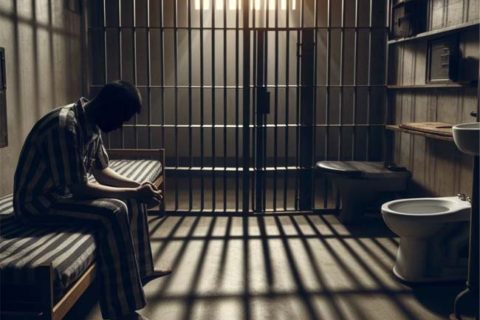You may have a friend or a family member in prison. You may be worried about his or her mental health and now you wonder about the cost of mental health care in prisons. If so, here is the information about the cost of mental health care in prisons according to a number of online sources.
- According to the Nami site, here is the explanation about the cost of mental illness care in prison. On average, in 2018, the cost of holding people in federal custody was around $102.60 per day per adult or $37,449 a year. The monetary cost for juvenile detention is $588 per day per youth or $214,620 per year. Now, how about the average cost for psychiatric treatment in a community hospital? It ranges from $3,616 to $8,509, depending on the type of illness which is treated.
- According to the Equivant site, here is the explanation about the cost of mental health care in prisons. Between 2007 and 2011, there were 41 states which saw an increase in prison health care spending, with a median increase of 13%. From this spending, 14% was spent on mental health care. In 2007, there was a study where researchers in Broward County, Florida found that the cost for housing a typical inmate was $80 a day, while the cost for housing an inmate with a mental illness was $130 a day. In the study, it is revealed that the cost of pharmaceuticals is also rising and the prisons have to spend higher on psychiatric medications as well.
- According to the Gazette site, here is the explanation about the cost of caring for mentally ill inmates. The spending of the state on mental health care for prison inmates has almost quadrupled in the past two decades. The spending on the Colorado Department of Corrections’ mental health subprogram increased from around $4.4 million in fiscal year 2000-01 to almost $17 million in fiscal year 2017-18 according to the report of the department. The expenses of this subprogram include the salaries of mental health clinicians and contracts for psychiatric services, but it does not cover the cost of psychiatric medications. Nationwide, around 2 to 3 times more are spent by jails on inmates who require mental health care than on inmates who do not have those needs as estimated by the National Association of Counties. Even though El Paso County does not track exactly the amount of taxpayer money which is spent to care for mentally ill inmates in its jail, but its medical contractor is paid by the county more than $7.4 million in 2018 for inmate health care services. The research shows that holding mentally ill people in jails is more expensive than treating them in the community. In Detroit, around $31,000 a year is spent to house a mentally ill person in jail, but the similar person could be getting treatment in the community for about $10,000 a year as explained by the National Alliance on Mental Illness.
- According to the Pew Trusts site, here is the explanation about the cost of healthcare in prisons. In fiscal year 2015, $5,720 per inmate was spent by the typical state department of corrections to provide health care services where those included medical, mental health, dental, and substance use treatment. However, departments in four states such as New Mexico, California, Vermont, and Wyoming spent more than $10,000 per inmate, while five states such as Indiana, Alabama, Louisiana, South Carolina and Nevada spent less than $3,500 per inmate.
- According to the Array Behavioral Care site, here is the explanation about the cost of correctional mental health. It is estimated by the Department of Justice that approximately $15 million of American taxpayers’ money is used to house people with mental illnesses in prisons and jails which means that it is $50,000 per inmate annually. Despite the standards of federal for mental health treatment in prisons, the resources for most facilities vary from region to region based on location, the breakdown of inmates and their illness and the availability of trainable staff and people to train them. An estimated $10 million per year was spent by The Los Angeles County Jail on psychiatric medications alone in 2001. Meanwhile, by 2005, $67 million per year was aimed for treating 8,371 mentally ill prisoners in Ohio. Costs vary as well depending on which treatments or medications are needed at certain correctional facilities. In 2000, $175,000 was spent by Cuyahoga County Jail in Ohio on Zyprexa, or olanzapine, alone. There is an obvious difference between costs of general prison inmates and those with mental illness. In Broward County, Florida, a general population inmate is housed and it costs taxpayers $78 per day. Meanwhile, the price rose up to $125 per day for an inmate with a mental illness. As of 2002, sentences averaging 12 months longer than those of non-mentally-ill prisoners were received by state prisoners with mental illnesses. The incarceration of people with mental illnesses has given contribution greatly to the issue of overcrowding in jails and prisons. Often, if caretakers or loved ones of the mentally ill cannot provide or find adequate care, they resort to having the individual arrested.
Access to Mental Health Care and Incarceration
According to the Mental Health America site, here is the explanation about access to mental health care and incarceration.
Each year, 1.2 million people with mental illness sit in jail and prison. Usually, they are involved in the criminal justice systems because they violate the low-level rules such as jaywalking, disorderly conduct, or trespassing.
In 2015, the states were ranked by The Sentencing Project based on the number of people incarcerated in state prison per 100,000 residents. Comparing state by state rates of incarceration with the access to mental health care, it shows a strong positive correlation between rates of adults who are in the criminal justice system and lack of mental health care access.
The states which have less access to mental health care have more adults who are in the criminal justice system. There are six out of 10 of the states with the least access to mental health care which have the highest rates of incarceration. The states are Alabama, Arkansas, Mississippi, Texas, Georgia, and Florida.

A bookworm and researcher especially related to law and citizenship education. I spend time every day in front of the internet and the campus library.




